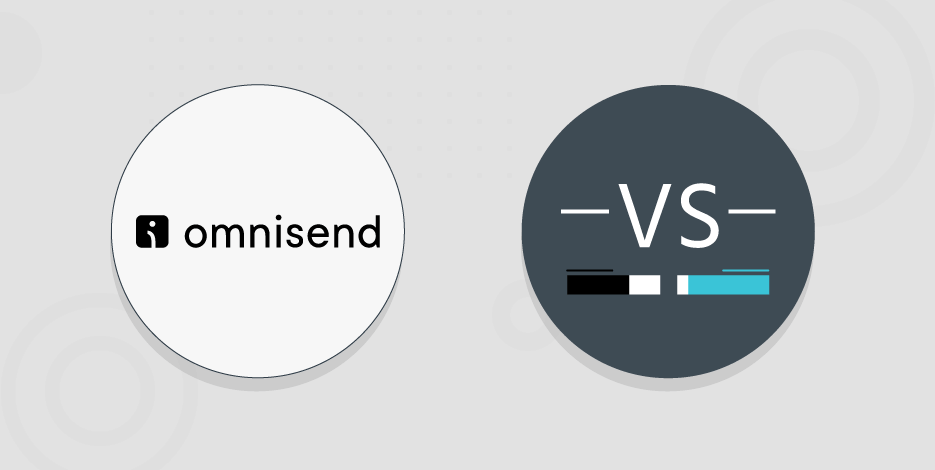
Omnisend vs Mailchimp: Which One Is Better For Your Needs? [2025]
Omnisend and Mailchimp are two popular choices when it comes to selecting an email marketing service for eCommerce. Both services offer a range of powerful tools that can help you connect with your customers, build strong relationships, and increase your sales.
Despite their similarities, they have their unique strengths and limitations. By understanding these key differences between Omnisend and Mailchimp, you’ll be able not only to make an informed choice but also to maximize the value you can get from them.
In this Omnisend vs Mailchimp review, we test their features, overall ease of use, marketing automation capabilities, customer support, pricing model, and more to see which service comes out on top.
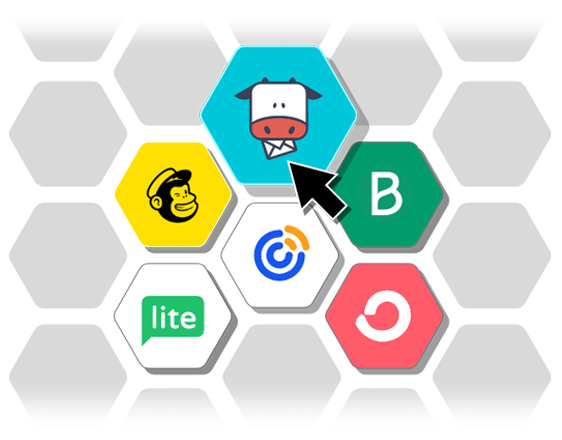
Save $$$ of your marketing budget by switching to Moosend today!
Omnisend vs Mailchimp: Feature Comparison
Here we have a quick comparison table to get you started.
| Omnisend | Mailchimp | |
| Free plan | Yes (limited) | Yes (limited) |
| Pricing | $16/month (500 contacts – 6,000 emails) | $13/month (500 contacts – 5,000 emails) |
| Best for | eCommerce | eCommerce, Publishers |
| Ease-of-use | 4.5/5 | 4/5 |
| Email tools | Email builder, 336 pre-made templates, Product picker, Brand assets | Email builder, 137 pre-made templates, Content studio |
| Marketing automation | Advanced (eCommerce-focused) | Advanced |
| Reporting & Analytics | Extensive | Extensive |
| Landing pages & Signup forms | Yes | Yes |
| SMS marketing | Yes (built-in) | Yes (add-on) |
| Deliverability | 78.5% | 92% |
| Integrations | 178 | 335 |
| Customer support | Knowledge base, 24/7 email and chat support | Knowledge base, email support, chat and phone support |
| AI features | AI assistant for email copy, AI subject line generator | AI content generation for email only (beta), Subject line helper, AI-generated automations (beta) |
Now let’s see more details about each category.
Setup & Ease of Use
Omnisend:
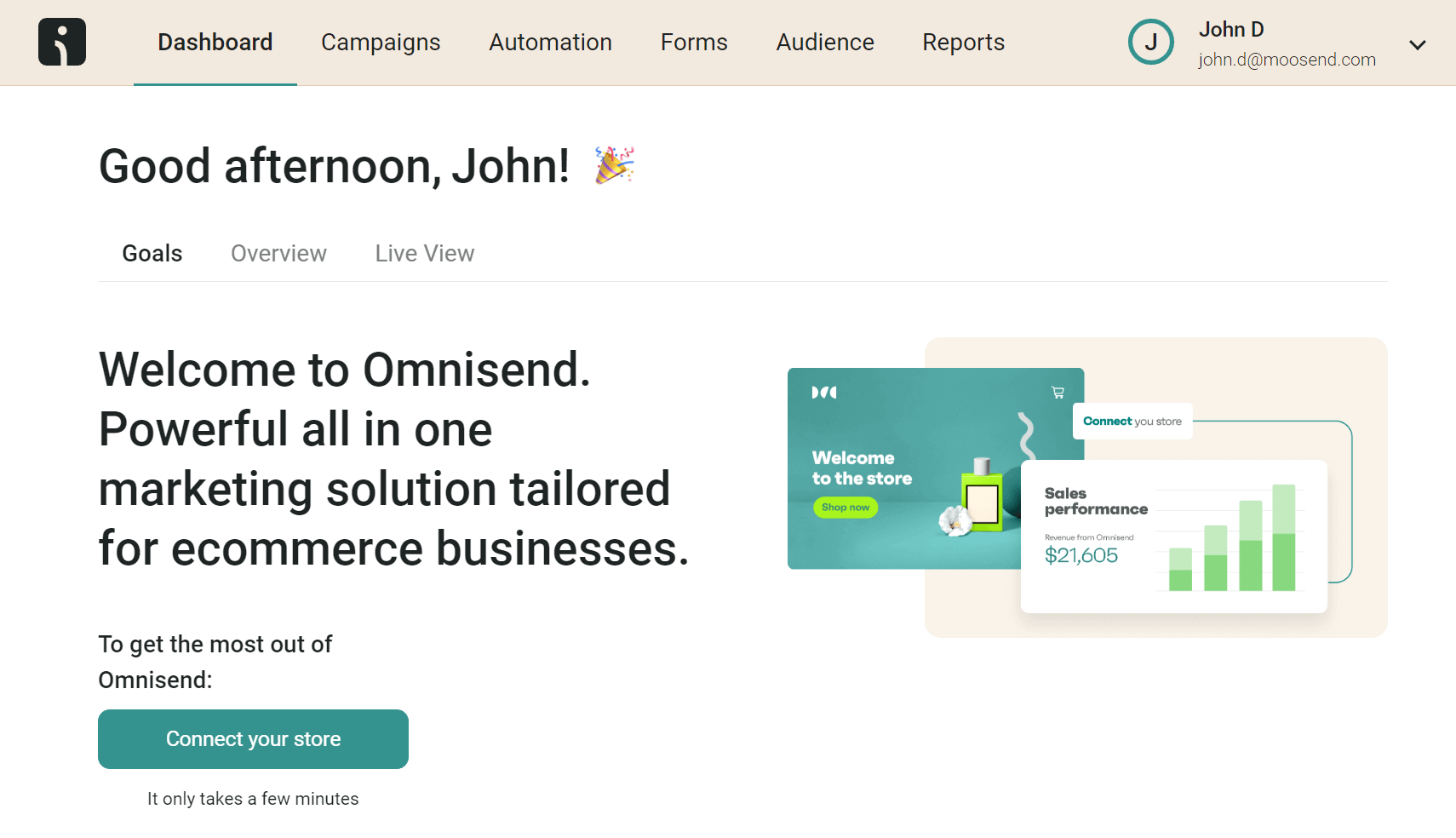
Starting with Omnisend, this email marketing tool has a user-friendly interface that’s clean and easy to navigate from the main navigation menu bar. We found everything to be straightforward, while the only “frustrating” part was that landing pages were hidden in the forms tab.
Regarding the setup, Omnisend requires you to connect your store if you want to unlock automation, forms, or reports. The only thing you can test (if you don’t connect your store) is the campaign editor. This was a bit disappointing since it prevents users from quickly testing the tool before committing.
Mailchimp:
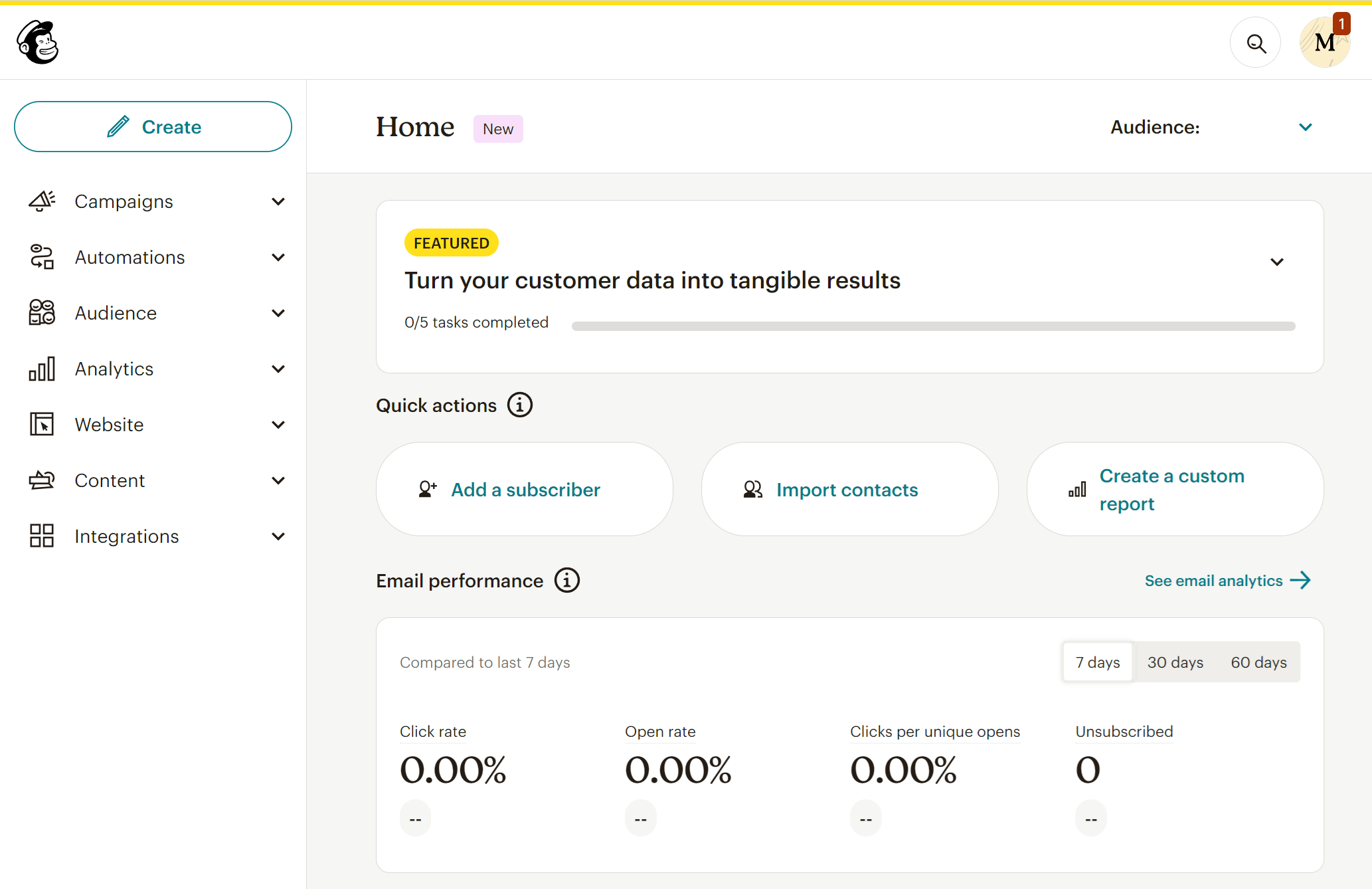
You can set up Mailchimp’s email marketing platform in just a few minutes without much hassle. Navigating the platform is easy since everything is neatly organized in one place.
If you want to create something new like an email campaign, automation, landing page, or website, you simply click on the ‘Create” button at the top left corner of the page. This helps not only save time but also give users a clear picture of what they can create through Mailchimp’s service.
The platform used to be more complex, but the company has made serious improvements. Nevertheless, we found out that it is still difficult to find certain things like where your forms and landing pages go once you create them.
The overall experience with the platform is good, but beginners will have a harder time due to the range of features the platform includes.
Winner: The winner here is Mailchimp because it requires fewer steps for users to explore and use the platform.
Email Builder
Omnisend:
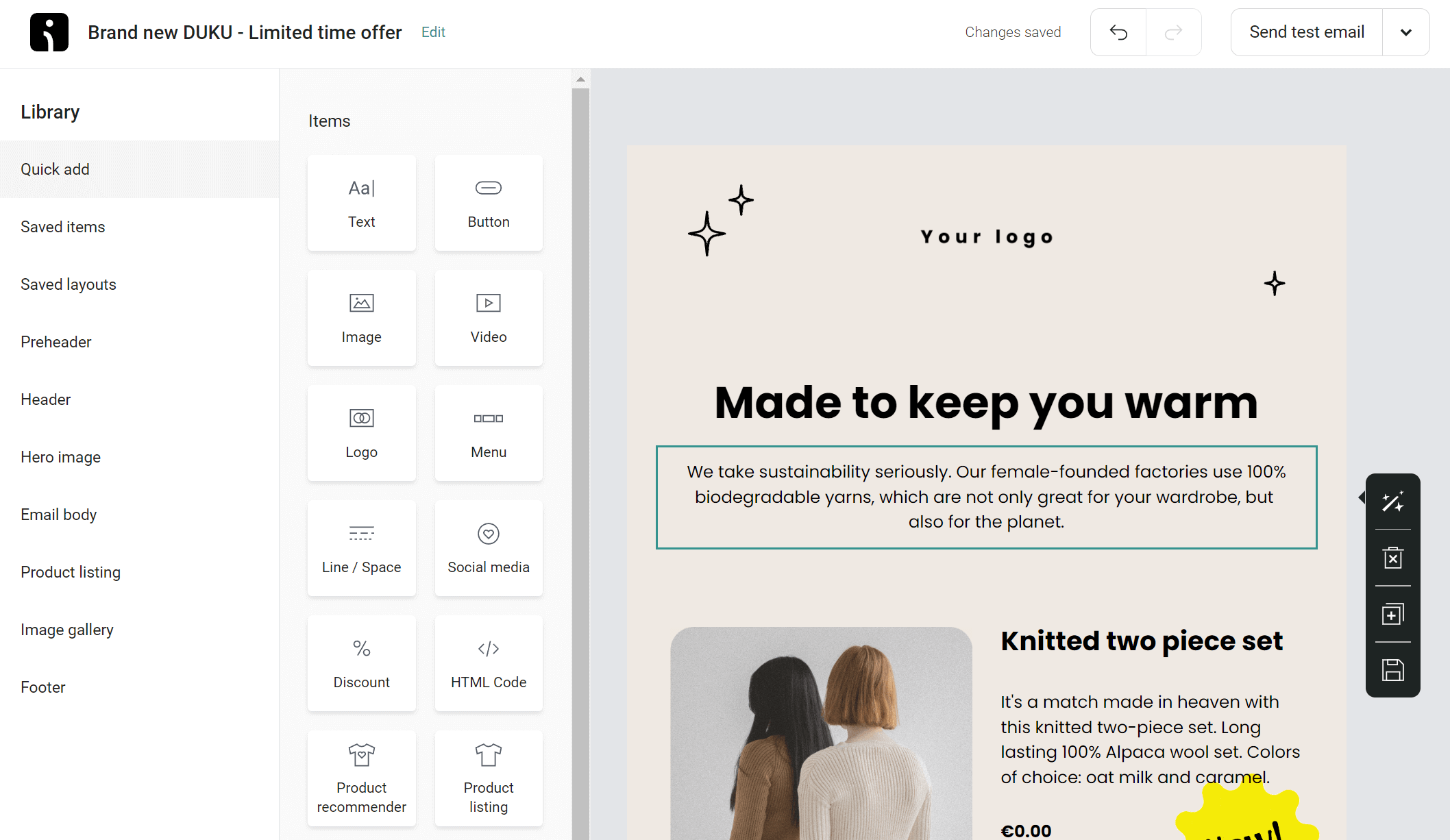
Like Mailchimp, Omnisend’s email builder has drag-and-drop functionality. You get various content blocks and layouts to build stunning email newsletter campaigns. These can be accessed through the “Quick add” button. We also found that the pre-made content blocks can drastically speed up campaign creation.
The main difference between Omnisend and Mailchimp here is that this tool offers items specifically designed for online stores. These include the discount codes and the personalized product recommendations. The discount codes are automatically synced to your store. You can also set up “dynamic content” featuring products your customers are most interested in.
Each block can be fully customized and moved around. During our Omnisend review, we found that you can undo changes only with the undo button, and not with the keyboard shortcut Ctrl + Z. This can be a bit frustrating and time-consuming.
Finally, Omnisend’s email editor can automatically pull your store’s branding (Brand assets) and use it in your campaigns.
Mailchimp:
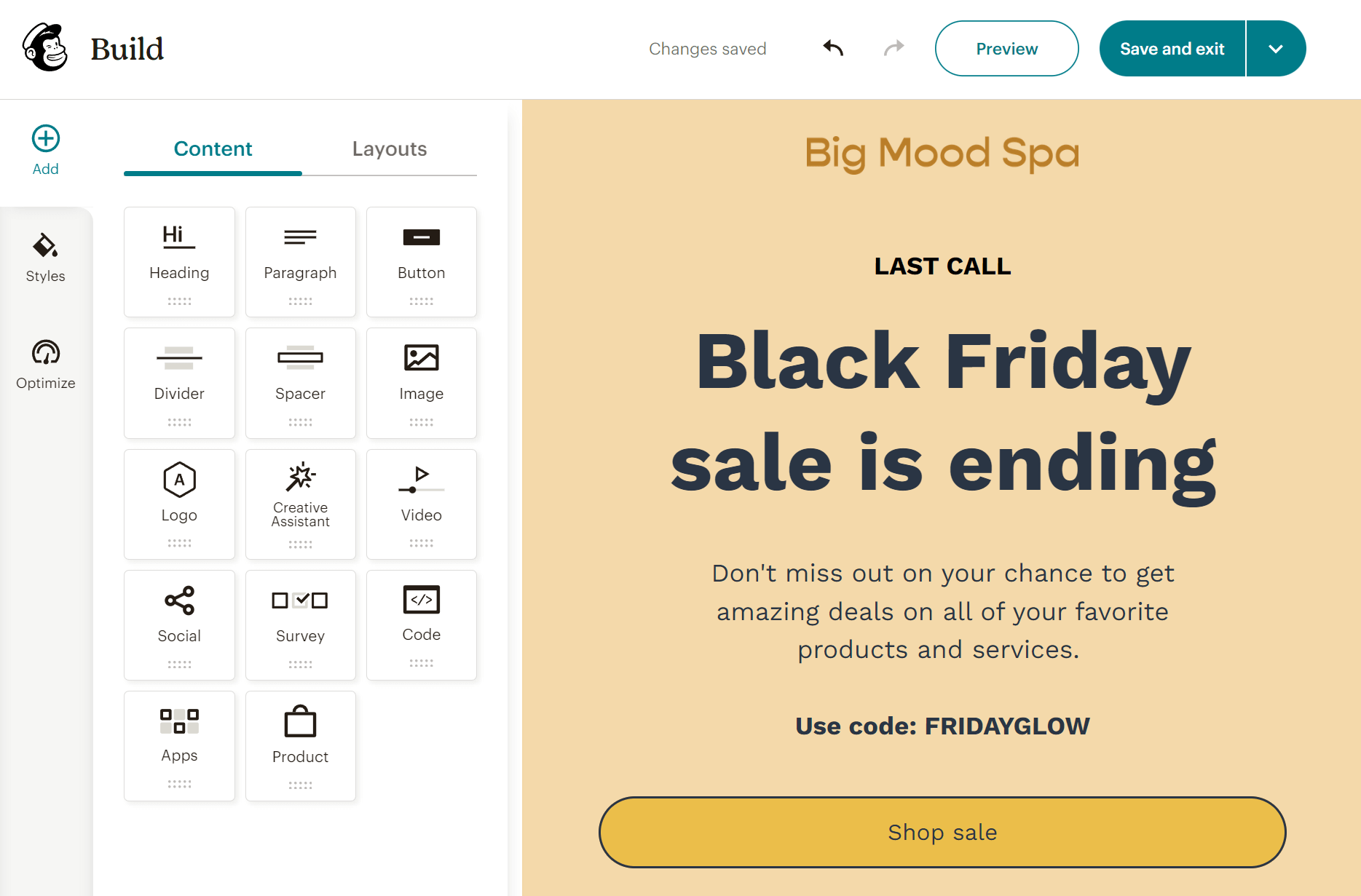
Mailchimp’s email builder is fast and intuitive, offering a decent range of both simple and advanced features. Users can add images, videos, buttons, surveys as well as their own custom HTML code. By connecting your store with Mailchimp, you can also add products and make product recommendations.
Customizing your email content is easy. You simply click the item you want and edit. Another useful function we found is the “Optimize” button, which helps you identify and fix errors in your email campaign.
If you purchase one of the more expensive plans (Standard, Premium), you also get an AI content generator.
Winner: Omnisend takes this win because it provides more options that can be valuable for eCommerce brands.
Templates
Omnisend:
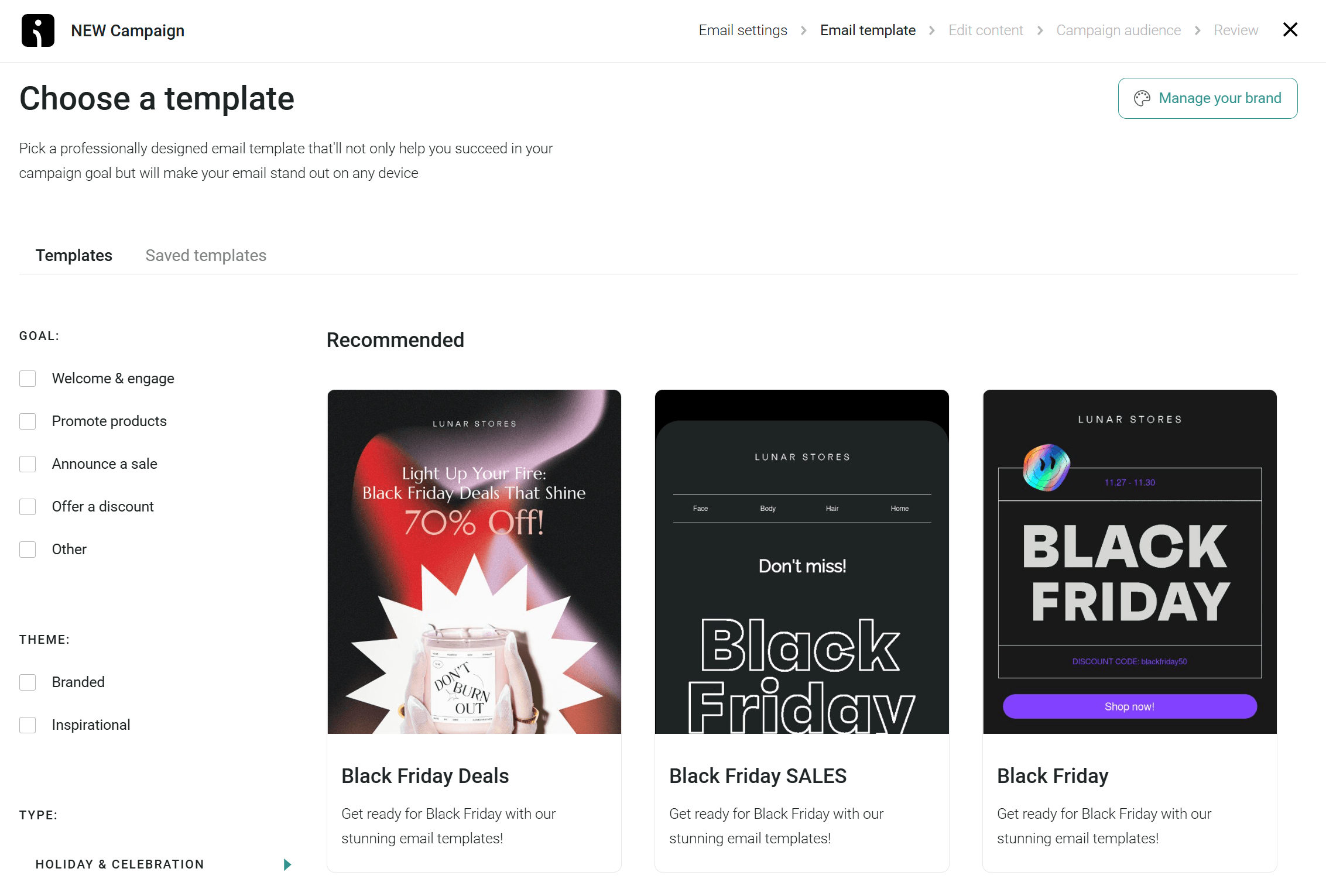
Omnisend has an impressive library of 336 customizable pre-made newsletter templates. Not only are these templates high-quality, but they can be customized to match your brand, style, and tone. We found designs for major celebrations and holidays, fashion, travel, and more industries. These templates can also be filtered based on the goal you want to achieve (e.g., promote a product, announce a sale).
We were pleased to find that Omnisend lets you save individual blocks. These blocks can then be re-used in future campaigns, thus saving you significant time and effort.
Unlike Mailchimp, this eCommerce email marketing tool grants access to templates for all users, whether they have purchased a paid plan or not. This is an essential benefit for new users looking to kickstart their digital marketing strategy.
Mailchimp:
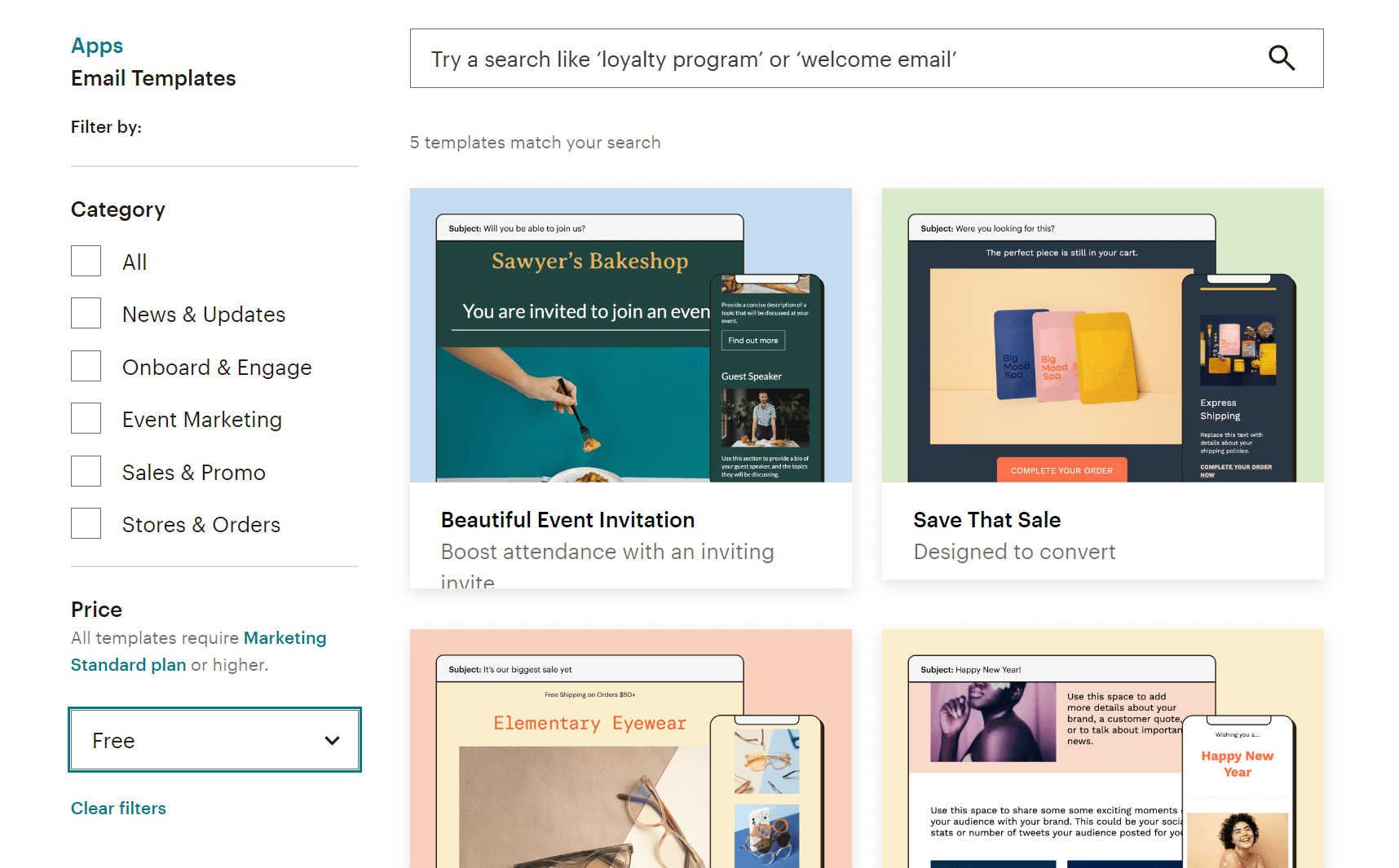
Mailchimp’s email marketing software comes with 130+ professionally designed email newsletter templates. They can cover various use cases and therefore they are categorized for easier navigation.
For example, we found designs useful for sales and promotions, lead nurturing, onboarding, and transactional email campaigns. If you have coding knowledge, you can also add or code your own HTML templates.
For the purposes of our Mailchimp review, we used a free account. As a free user, you can only access 8 basic templates which are not ideal for the needs of an eCommerce business. So, if you plan to start using Mailchimp for free, you’ll be at a disadvantage compared to what Omnisend offers in its free version.
Winner: Omnisend wins this one since it offers far more designs, which are also aesthetically pleasing. On top of that, these templates are available even to free plan users.
Marketing Automation
Omnisend:
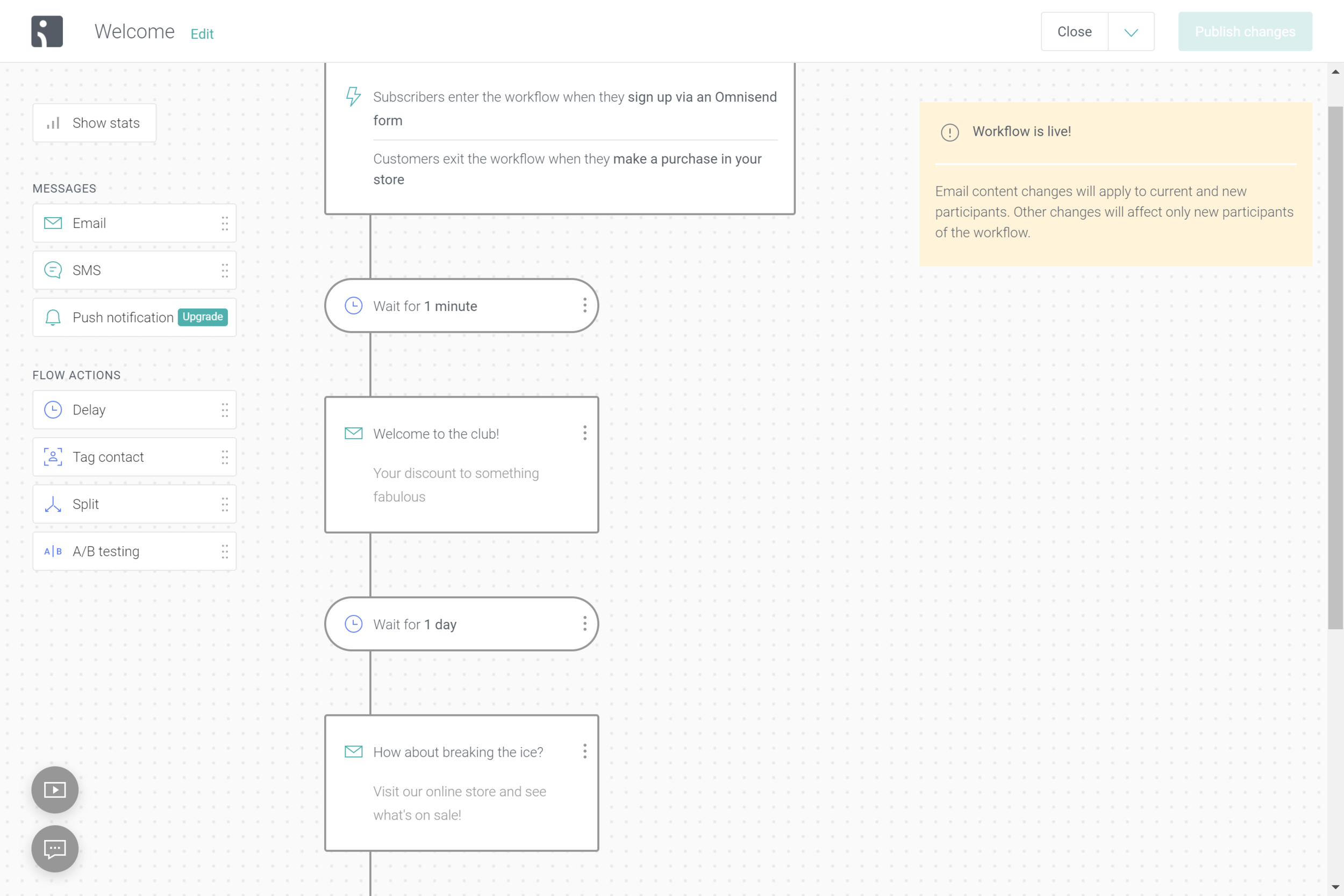
Automation is a key feature of any email marketing service. To set up your automated sequences, Omnisend has an easy-to-use visual automation builder. It comes with many pre-built automation sequences like welcome, abandoned cart, browse abandonment, and customer reactivation.
With Omnisend, you will also have no trouble creating more sophisticated journeys. You can include SMS messages, push notifications, and Facebook Messenger in the same flow. This gives you ample flexibility to reach customers any way you want. Additionally, you can split flows (conditional splits) and conduct A/B testing.
Regarding the available triggers, we found many useful ones like product viewed, order placed, page viewed, and added to a segment.
Overall, we felt that Omnisend integrates multiple channels seamlessly, while also providing you with information for every automation step. For example, you can see how many recipients exist in each stage of the workflow, where your delays are, and whether an email or SMS is being sent.
Mailchimp:
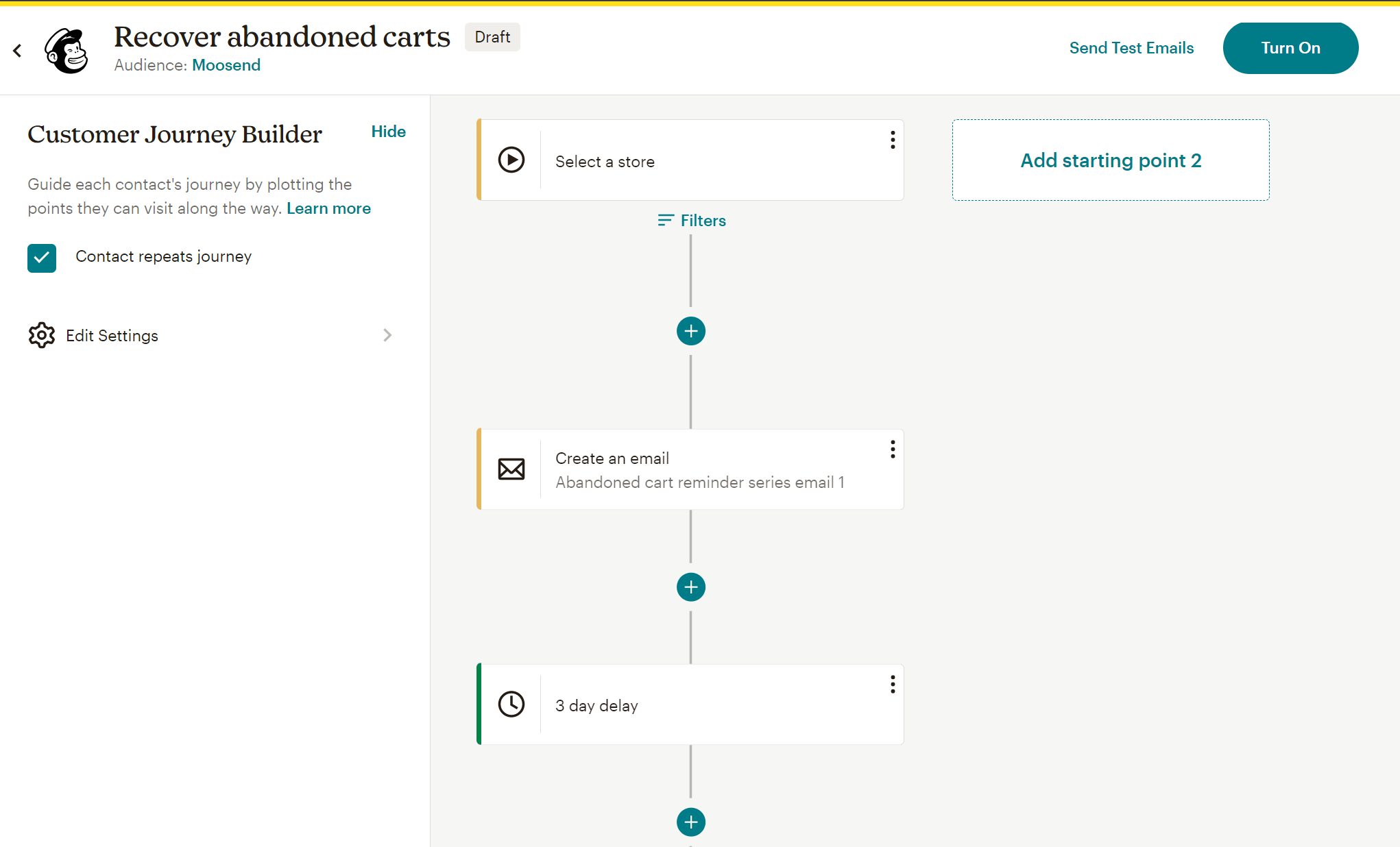
Mailchimp’s automation features are also very powerful. However, the platform focuses more on email automation without including other communication channels like Omnisend.
Mailchimp comes with 102 pre-made automation journeys for various purposes like welcoming subscribers and sending thank you messages. Apart from that, the Customer Journey Builder is intuitive, allowing users to create both simple and more sophisticated workflows.
You can use multiple triggers and actions for your sequences, but there aren’t as many options as you’d find in Omnisend. For small businesses, Mailchimp’s email marketing automation will be enough.
Winner: Omnisend is the winner here. It offers advanced automation workflows that can eliminate manual tasks of eCommerce businesses and increase their revenue.
List Management
Omnisend:
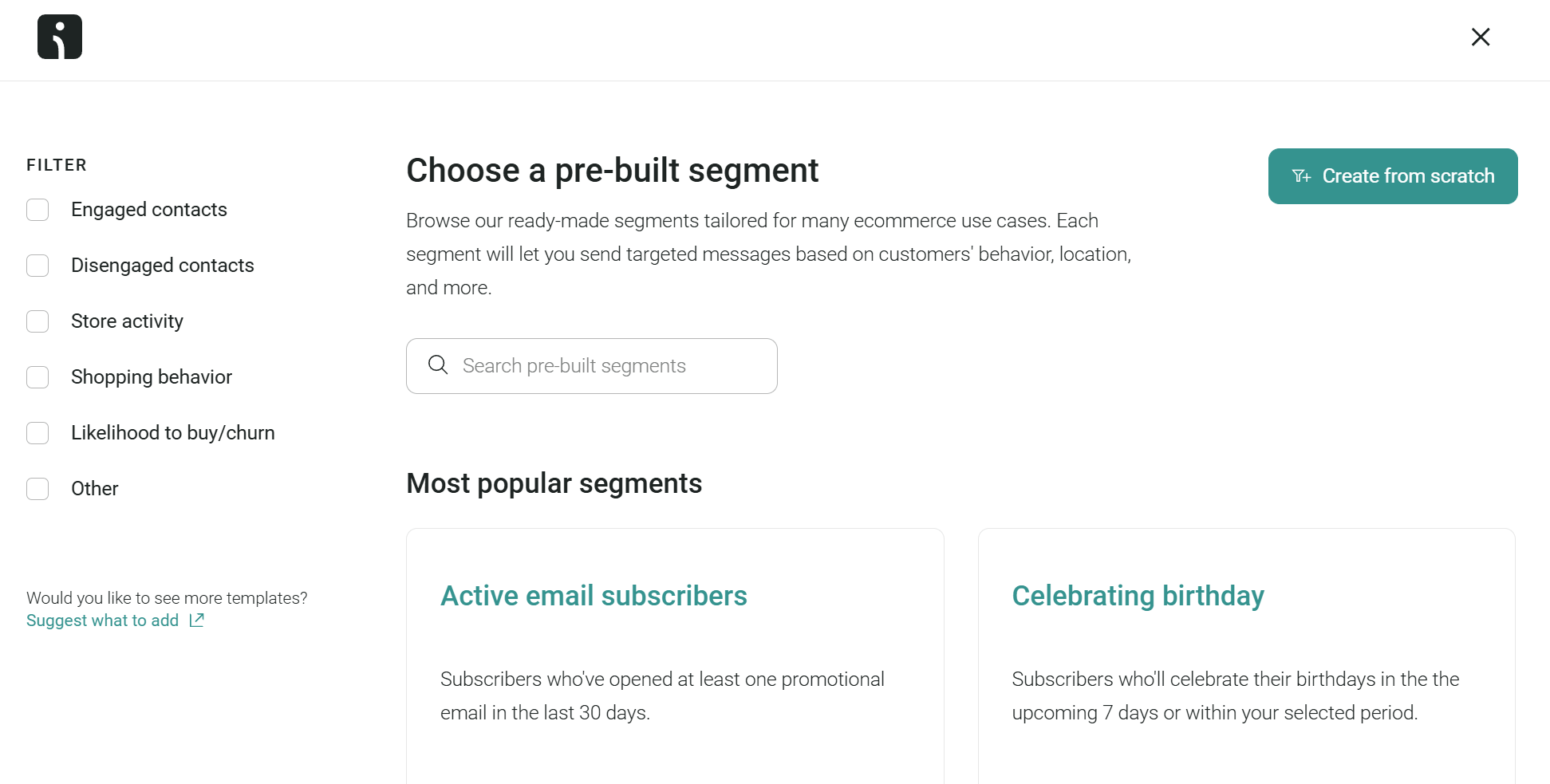
o deliver relevant and personalized information to your audience, Omnisend lets you create segments. In our Omnisend review, we found a bunch of pre-built segments that group subscribers based on store activity, shopping behavior, engagement, risk to churn, and more.
The segment builder itself is very flexible, allowing you to use up to 500 data points in your segments. Also, there is no limitation on the number of segments you can create.
What we also liked was the Lifecycle stage map. This Omnisend feature lets you view your customers broken down into lifecycle stages based on their shopping recency and order value. For example, you can see which are your loyal customers, your recent customers and even which subscribers need more nurturing.
Mailchimp:
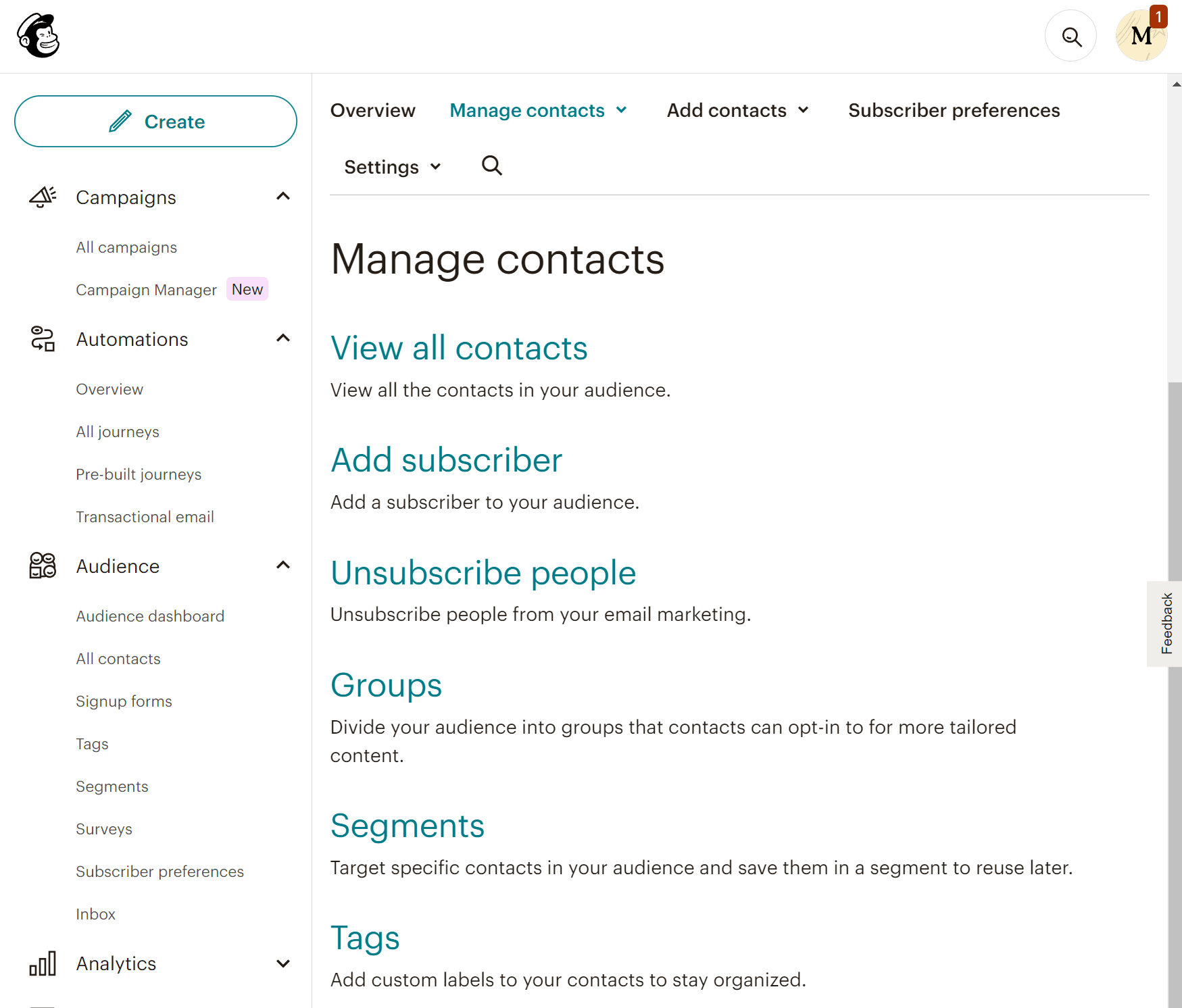
Mailchimp’s contact management is a bit different. Users can create lists (called Audiences) which are exclusive entities. This means that if a subscriber exists on more than one list, you’re charged for that same subscriber as many times as they appear. As a result, you can end up paying more than you expect.
To organize subscribers, you can create segments and groups, or apply tags to them. The distinction between them isn’t immediately clear and it can confuse new users.
Specifically, your email list can be segmented based on customer data like demographics, location, language, and signup source. On top of that, you can create segments based on purchase activity and abandoned carts as well as interactions with your campaigns.
Additionally, you can segment based on campaign interactions and eCommerce data like purchase activity and abandoned carts. Finally, with Mailchimp, you can set up a preference center that provides information on how your customers want to hear from you.
Winner: In our Omnisend vs Mailchimp comparison, we found that Omnisend has advanced segmentation options that are easy to apply. As such, Omnisend gets another point.
Reporting & Analytics
Omnisend:
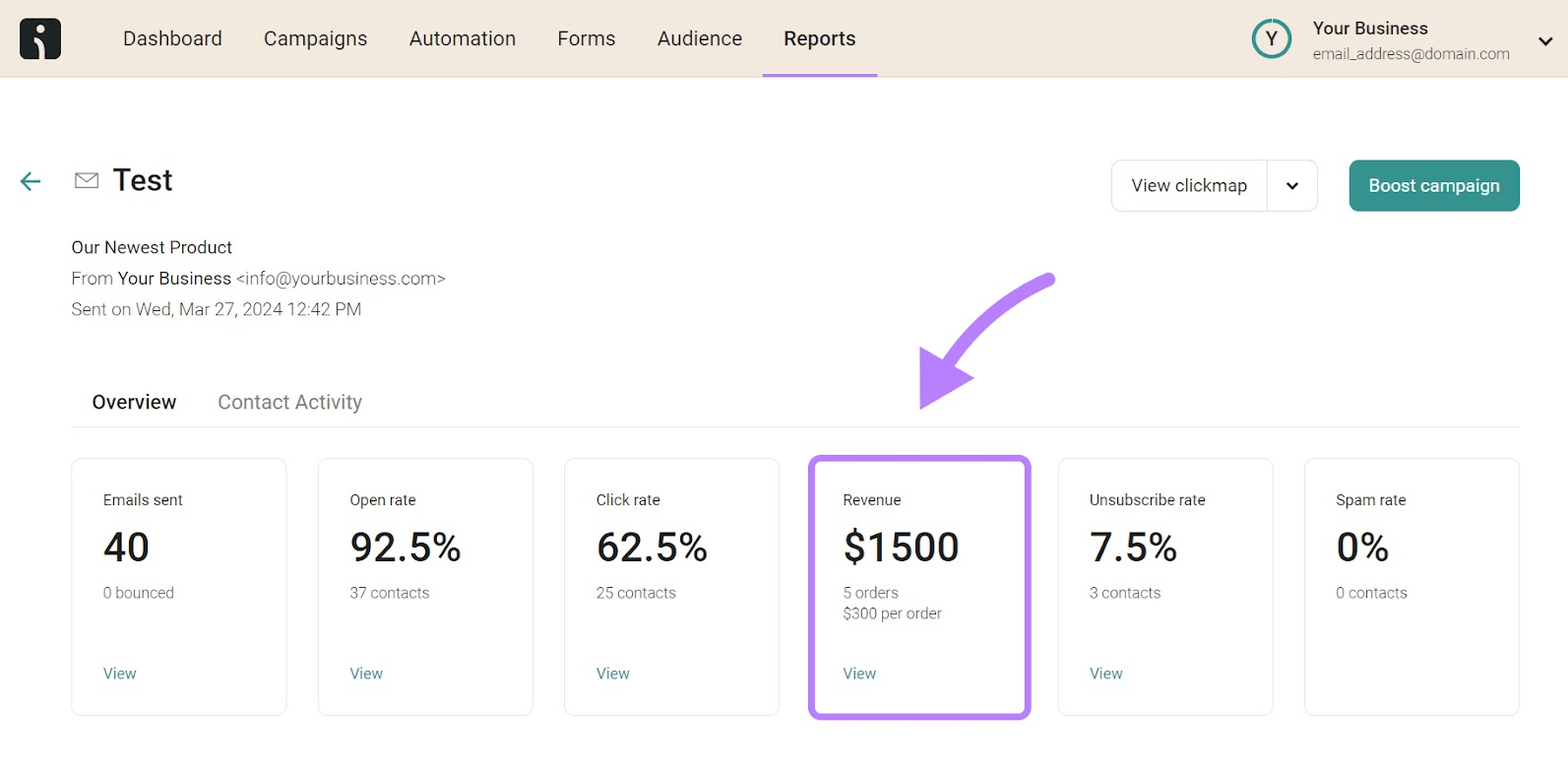
Omnisend’s reporting and analytics capabilities are tailored specifically for eCommerce businesses, offering actionable insights that align with online retail needs. The platform provides real-time analytics on campaign performance, revenue attribution, and customer behavior.
Notable features include revenue tracking for emails and A/B testing results that help eCommerce brands optimize their strategies effectively. Omnisend’s dashboard is user-friendly, displaying critical KPIs like sales conversions, open rates, and click-throughs in a visually digestible format.
Another standout feature we found is segmentation insights, which lets you track how specific customer groups respond to campaigns. This is invaluable when running targeted promotions or nurturing high-value customers. Omnisend’s analytics integrate seamlessly with its automation workflows, too, so you can make data-driven decisions.
Overall, Omnisend directly connects email performance to sales data, giving a crucial advantage to eCommerce marketers seeking ROI clarity.
Mailchimp:
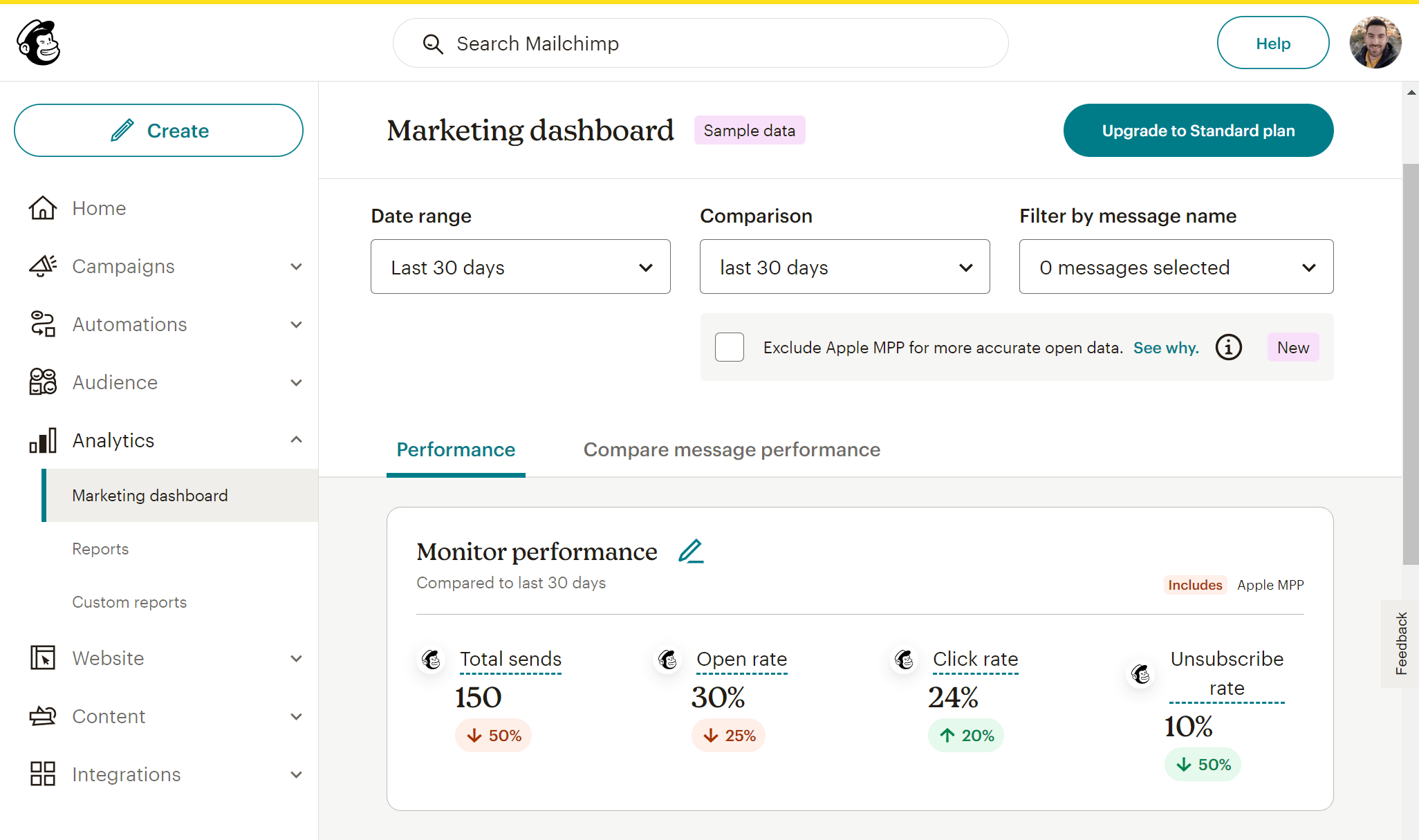
Mailchimp’s analytics are more generalist, designed to cater to a broader audience rather than focusing only on online retail. The platform offers strong visual reporting with customizable dashboards, tracking essential email metrics and more advanced ones. Among the standout features is predictive analytics, which can be vital for larger businesses to optimize their marketing efforts.
For eCommerce businesses, Mailchimp offers basic sales tracking and product performance insights through its integration with platforms like Shopify and WooCommerce. However, these features are less robust compared to competitors like Omnisend. Mailchimp focuses more on general email performance metrics rather than deep-dive analytics on revenue generation or customer segmentation tied directly to eCommerce.
One notable drawback for eCommerce is the lack of advanced revenue attribution. There is no granular focus for tracking ROI or linking specific campaigns to individual purchases. We also noticed the absence of native automation insights for cart recovery and product recommendations, something that online retailers can benefit from.
Winner: Mailchimp lacks the depth and focus of Omnisend, making it a better choice for general marketing. For eCommerce purposes, Omnisend’s reporting and analytics capabilities are superior.
Forms & Landing Pages
Omnisend:
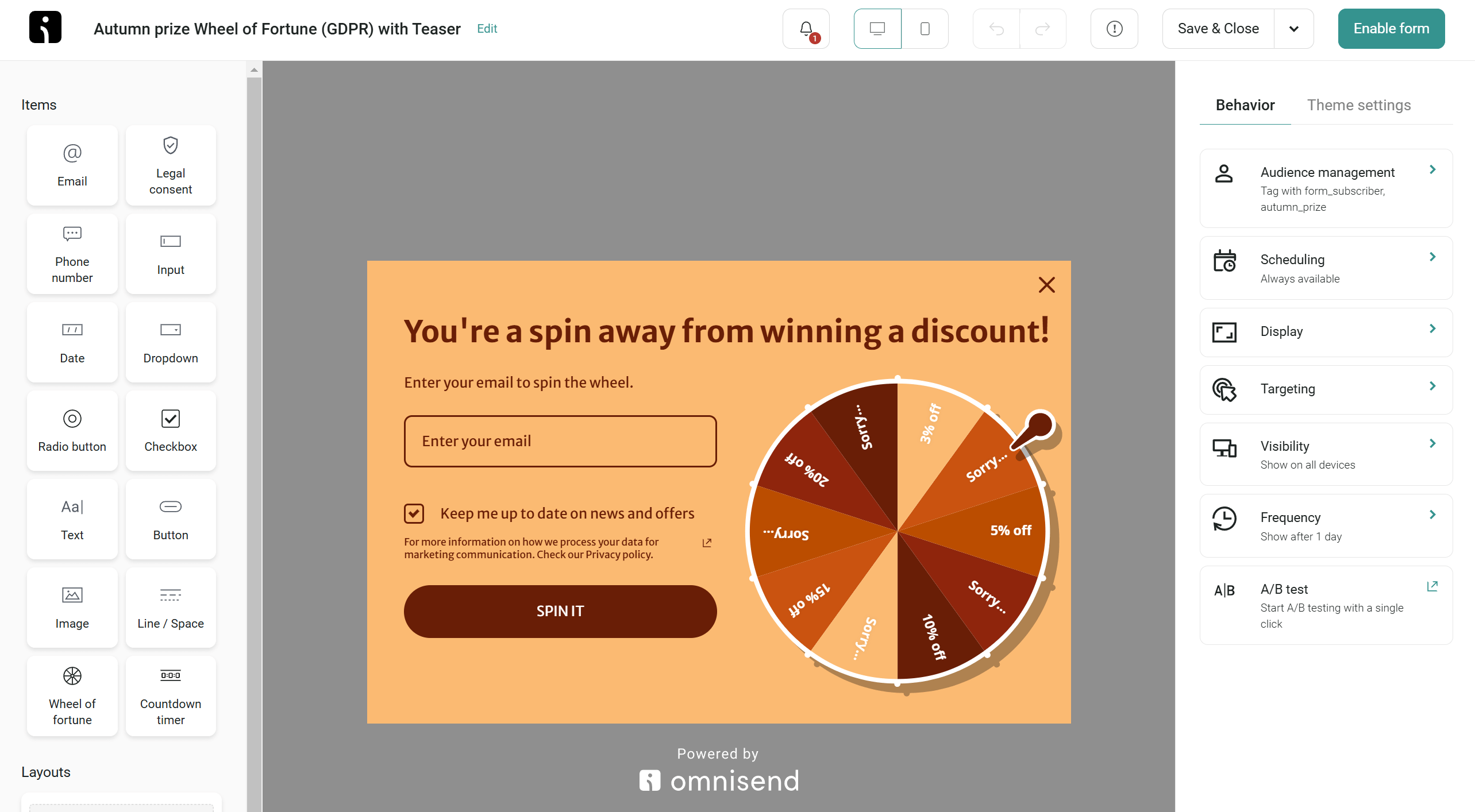
For lead generation, Omnisend comes with customizable forms and landing pages. In our Omnisend review, we found 111 pre-designed form templates, containing the industry’s best practices. You simply customize them to match your brand and start collecting subscribers.
Omnisend offers different types of registration forms like popups, signup boxes, landing pages, and flyouts. There are also gamified popups called Wheel of Fortune that are ideal for eCommerce purposes. The form builder has drag-and-drop functionality and is beginner-friendly. You can also set up the form’s behavior settings like time on page, exit intent, or scroll depth without hassle. We were also amazed by the quality of the available designs.
As for Omnisend’s landing pages, we found out that they are only useful for list-building and do not offer eCommerce features like checkout processes. You’re also limited to 8 designs.
Mailchimp:
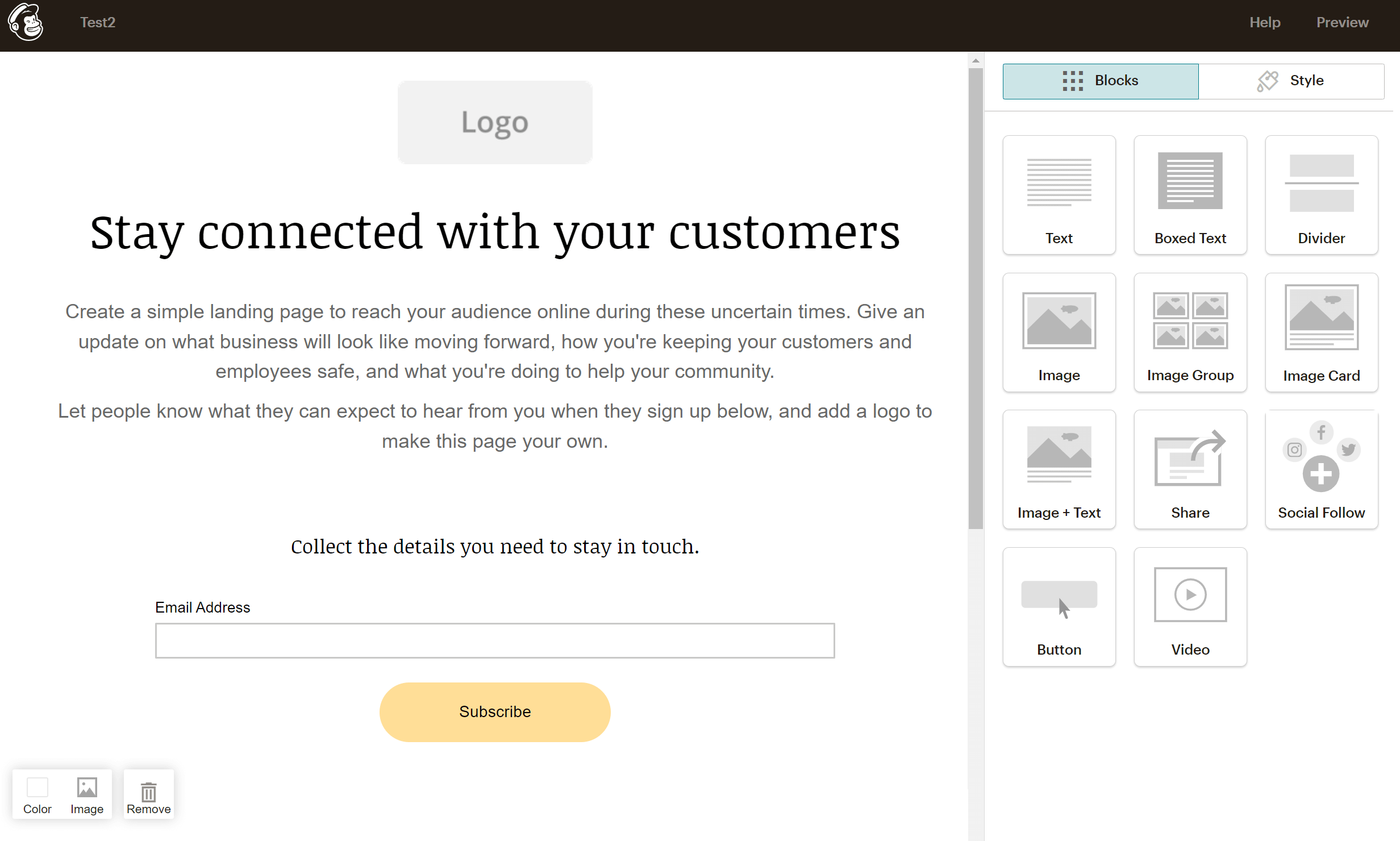
Mailchimp’s form builder is also drag-and-drop letting you add or remove items with ease. It isn’t the most modern editor, but it does the job well. There are several designs available that can be customized to match your brand style and tone. You can create embedded forms, popup forms, and signup landing pages.
The form builder has some handy advanced features like conditional logic and GDPR compliance options, ensuring your forms meet regulatory standards.
Regarding the landing page builder, you can use it to create standalone web pages for specific campaigns or promotions. Mailchimp’s landing page builder offers more versatility than Omnisend’s, including the ability to create product pages with checkout options. This is useful for eCommerce brands wanting to boost their revenue by creating promotional landing pages.
Winner: We give this win to Omnisend due to the vast variety of eCommerce-optimized form templates that include gamified options and countdown timers. Despite that, the landing page builder needs improvement.
Omnisend vs Mailchimp: Email Deliverability
Having a high email deliverability rate is crucial for effective email marketing. It would be a huge waste if you spent time designing the “perfect” email campaign, only to be delivered to users’ spam folder.
Emailtooltester has conducted email deliverability tests that illustrate how popular email marketing solutions perform compared to other competing services. Let’s see the results:
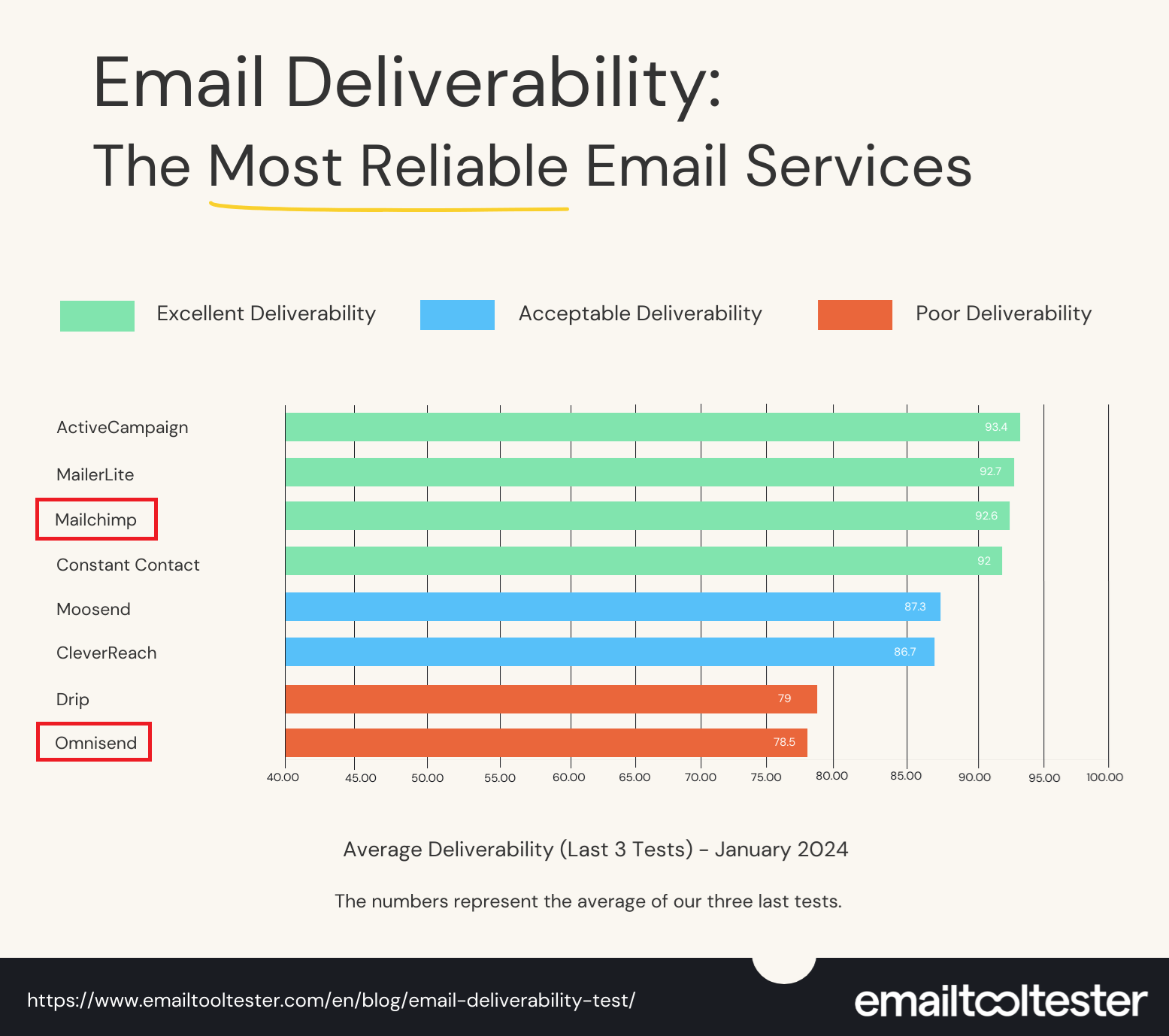
As you can see, Mailchimp stands in the excellent deliverability category with an average score of almost 93%. On the other hand, Omnisend is significantly lower scoring only 78.5%.
The truth is that these results can vary from sender to sender. However, they are an indication of what you can expect from each marketing platform should you decide to commit to one of them.
Winner: Undeniably, Mailchimp wins this round with flying colors.
Omnisend vs Mailchimp: Integrations
Integrations with eCommerce platforms as well as other apps like CRM, loyalty, and review services are essential to streamline your efforts. Let’s see how the two competitors fare.
Omnisend:
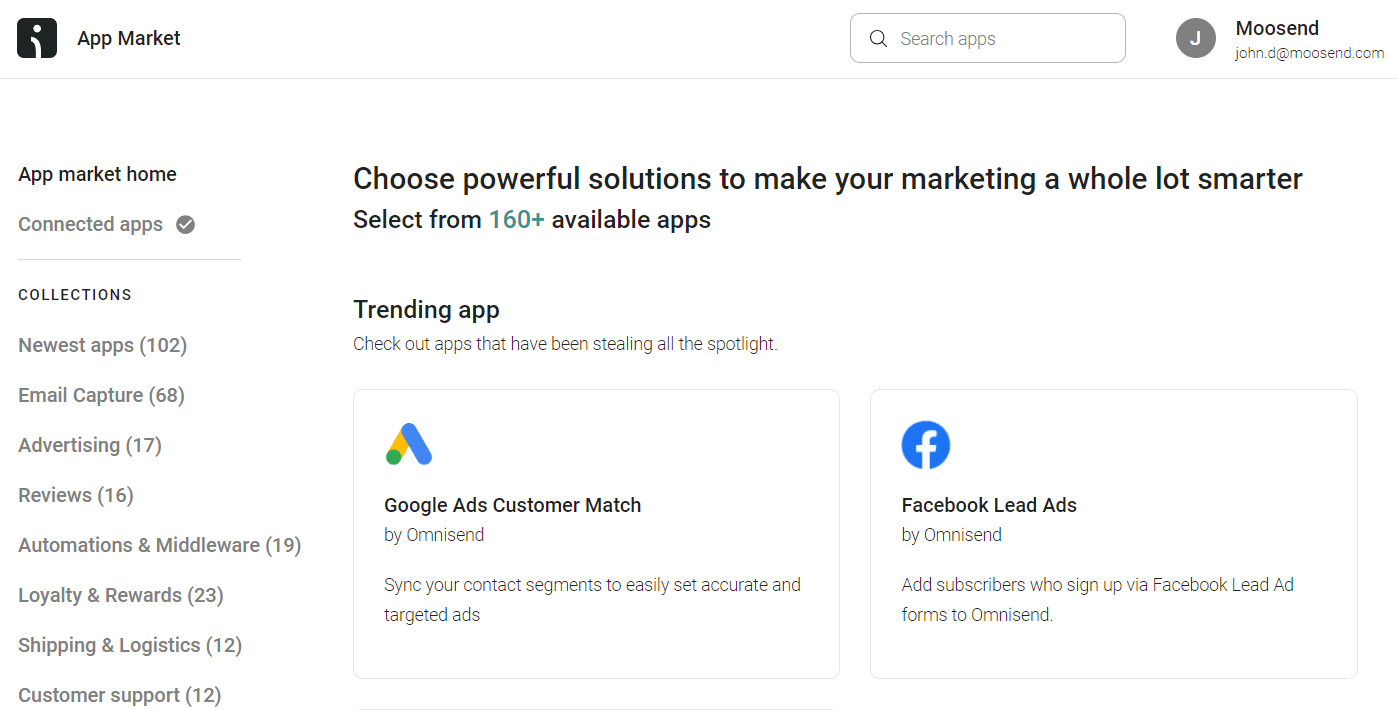
Exploring Omnisend’s platform and its App Market, we saw that the integrations offered are eCommerce oriented. There are 178 integrations available including email capture, advertising, shipping and logistics, and other customer support tools.
Also, Omnisend can connect seamlessly with online stores on Shopify, WordPress, BigCommerce, WooCommerce, and Wix. Integration takes less than a minute and once your data is synced, you can start sending messages to your audience.
And while Omnisend doesn’t have hundreds of native integrations, you can use Zapier if an app you want is missing from the list.
Mailchimp:
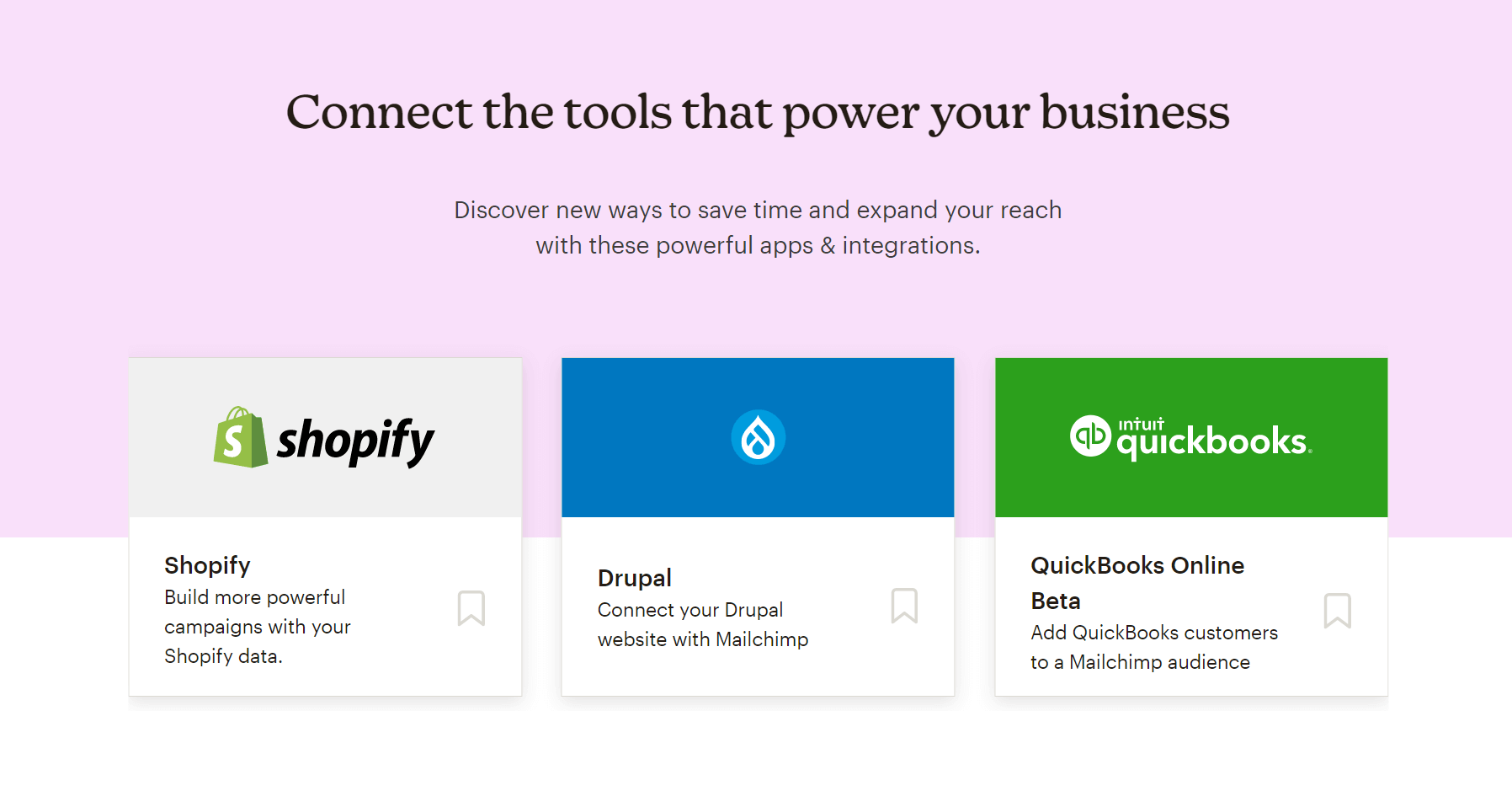
Mailchimp has almost double the number of integrations that Omnisend has. In its Integrations Directory, we found 330 integrations with apps like Shopify, Salesforce, WordPress, Wix, and Zapier.
Apart from integrations relevant to eCommerce, Mailchimp can connect with social media platforms, customer relationship management tools, and accounting software.
So, finding what you need won’t be an issue with Mailchimp.
Winner: While it depends on each user what kind of apps they want to use, we give this win to Mailchimp due to the higher number of integrations with third-party services.
Omnisend vs Mailchimp: Customer Support
Omnisend:
All customers on all plans, including the free plan, have access to 24/7 live chat and email support. Paid plan users have priority support. Generally, Omnisend’s customer support is quick to respond, and agents can provide answers to simple and more complicated queries. The platform has also an extensive knowledge base.
Mailchimp:
Things are different in Mailchimp. Free plan users have access to email support only for the first 30 days, leading to all kinds of frustration after that period. For paid plan customers, Mailchimp offers 24/7 live chat as well as email support. Users of the Premium plan also enjoy phone and priority support.
The main issue with Mailchimp’s support according to user reviews is the slow response times.
Winner: Omnisend easily takes the win since it provides live chat support even for free plan users. Mailchimp’s free users will have to resort to the knowledge base and tutorials after the initial 30-day period.
Omnisend vs Mailchimp: Pricing
It’s time to compare the two tools in terms of their pricing.
Omnisend:
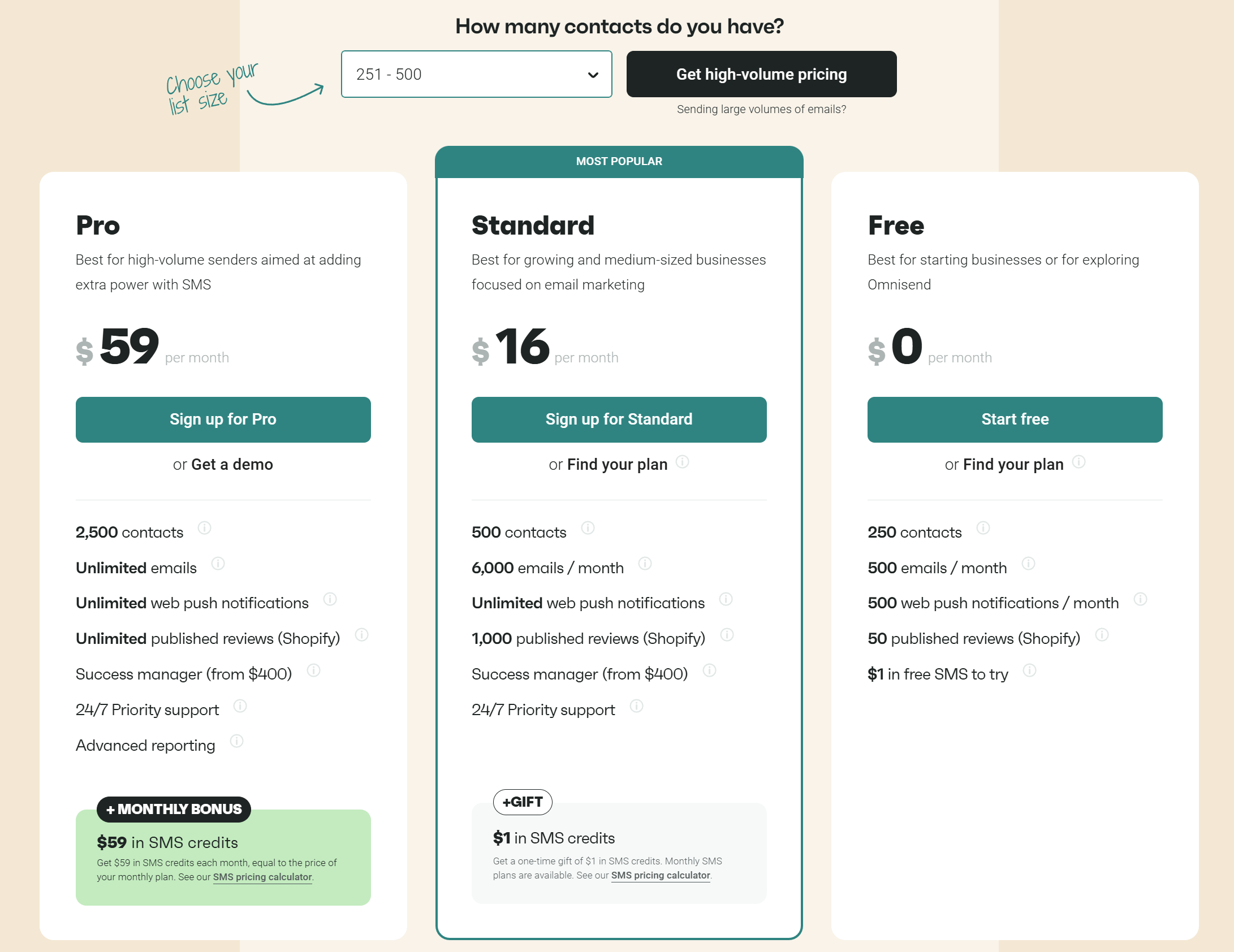
Omnisend’s pricing model is straightforward, consisting of a free plan and two paid ones. The free plan allows a limited number of contacts and emails per month, but you also get web push notifications and the ability to publish reviews on Shopify.
The Standard plan starts at $16/month and increases those limits. This plan is suitable for businesses looking to use email marketing mostly for their marketing campaigns. The Pro plan adds SMS functionality, unlimited emails, and advanced reporting. However, prices rise steeply.
Mailchimp:
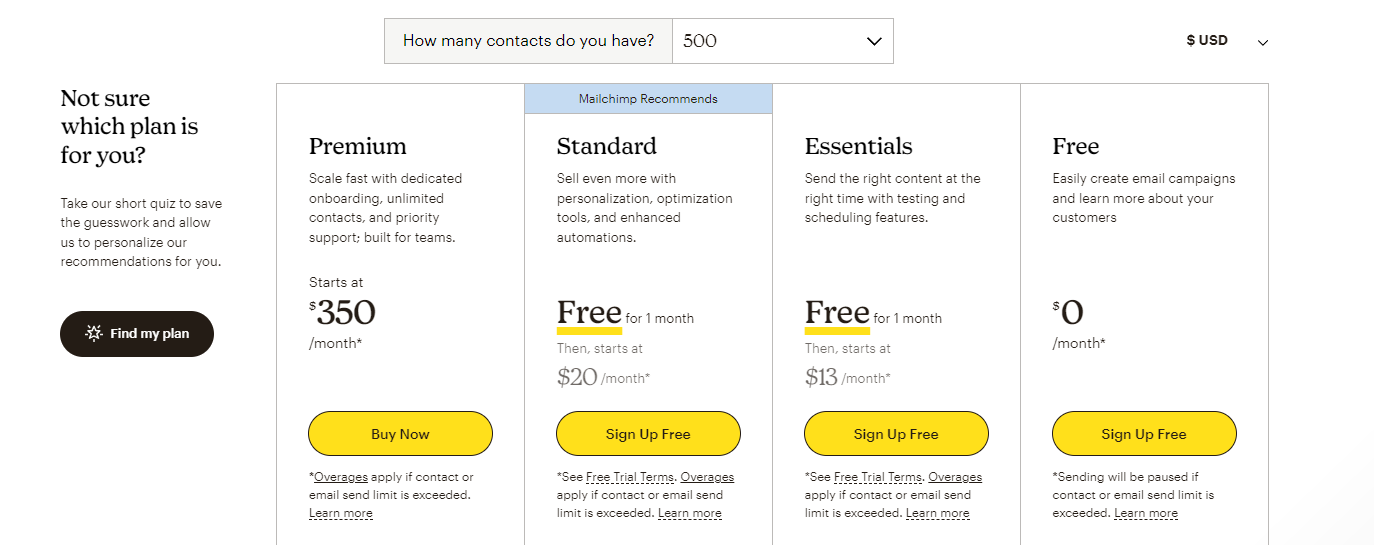
Mailchimp’s pricing is more complicated than Omnisend’s. There are three paid plans and a free plan. The free plan used to be popular among users, but recently it has shrunk considerably, allowing 500 subscribers and 1,000 monthly email sends. These numbers are higher compared to Omnisend, but as we said before, you lose access to email support after 30 days.
The Essentials plan offers basic tools to get started with email marketing, while the Standard plan offers more advanced segmentation, multi-trigger automation, retargeting ads, and multivariate testing.
The Premium plan offers even more advanced functionality that will be beneficial for larger organizations with specific needs.
Winner: Both services have similar prices for up to 2,500 subscribers. Omnisend is slightly more expensive the more subscribers increase. Nevertheless, we call this a tie.
Top Omnisend and Mailchimp Alternatives
If you’re unsure about Omnisend and Mailchimp or you want to explore more alternative options, here are the top contenders.
1. Moosend
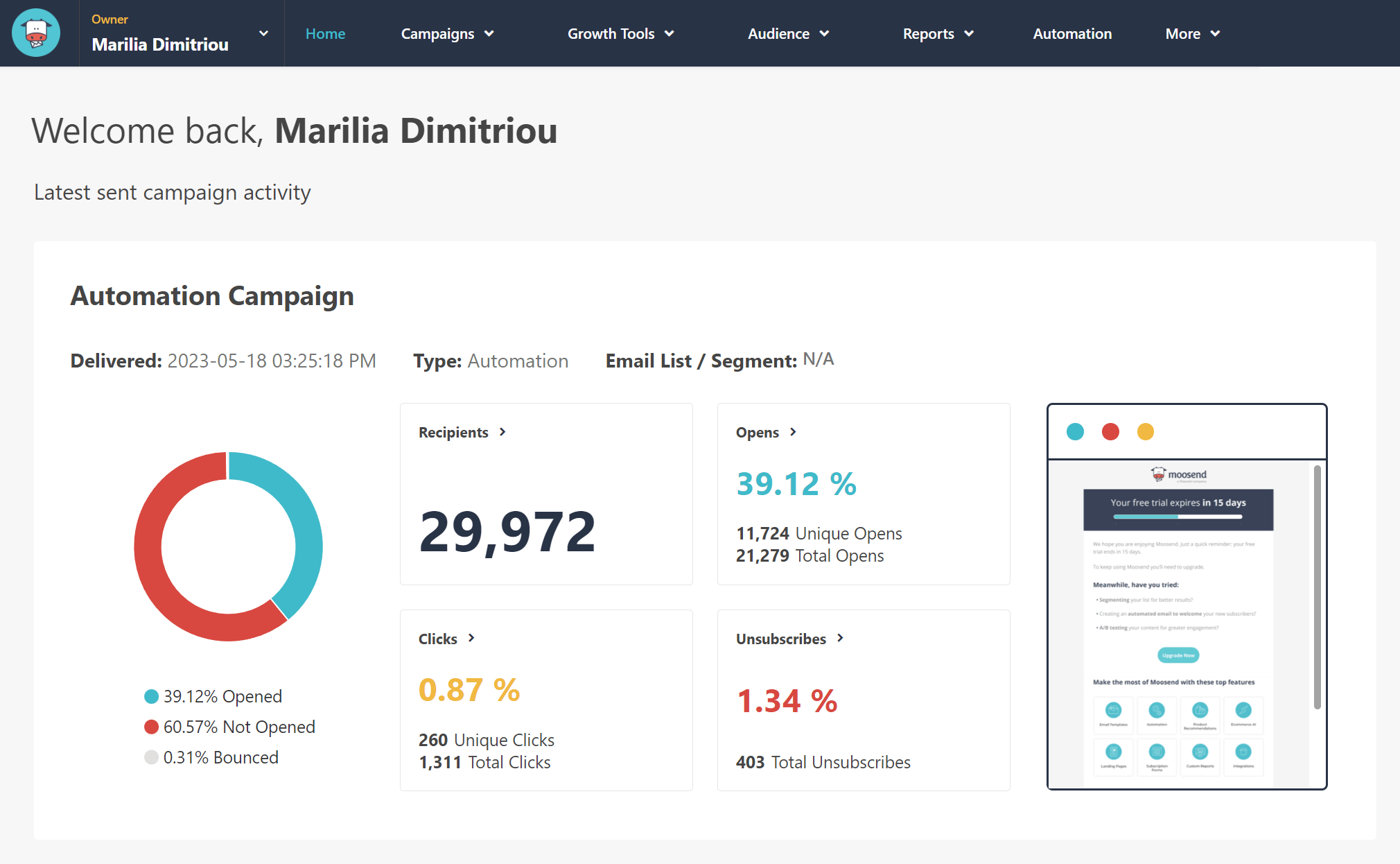
Pricing: Paid plans start at $9/month, 30-day free trial (Sign up here)
Best Feature: Powerful eCommerce automation with a vast range of triggers
Moosend is a robust all-in-one marketing automation platform with an intuitive interface and a minimal learning curve. Starting at a competitive price compared to Omnisend and Mailchimp, Moosend can deliver stunning email campaigns that can be tailored to specific audiences based on contact data and customer behavior. With the Audience Discovery feature, you can create smart segments based on purchase probability or interest for a product category and deliver relevant campaigns. The platform also offers advanced eCommerce automation with product recommendations, upselling and cross-selling options, and cart abandonment campaigns. Finally, Moosend can handle your transactional emails and provide real-time analytics including all key metrics like open rate, click-through rate, and bounces.
Why prefer Moosend: Affordable email marketing solution for eCommerce with a minimal learning curve and advanced automation.
2. ActiveCampaign
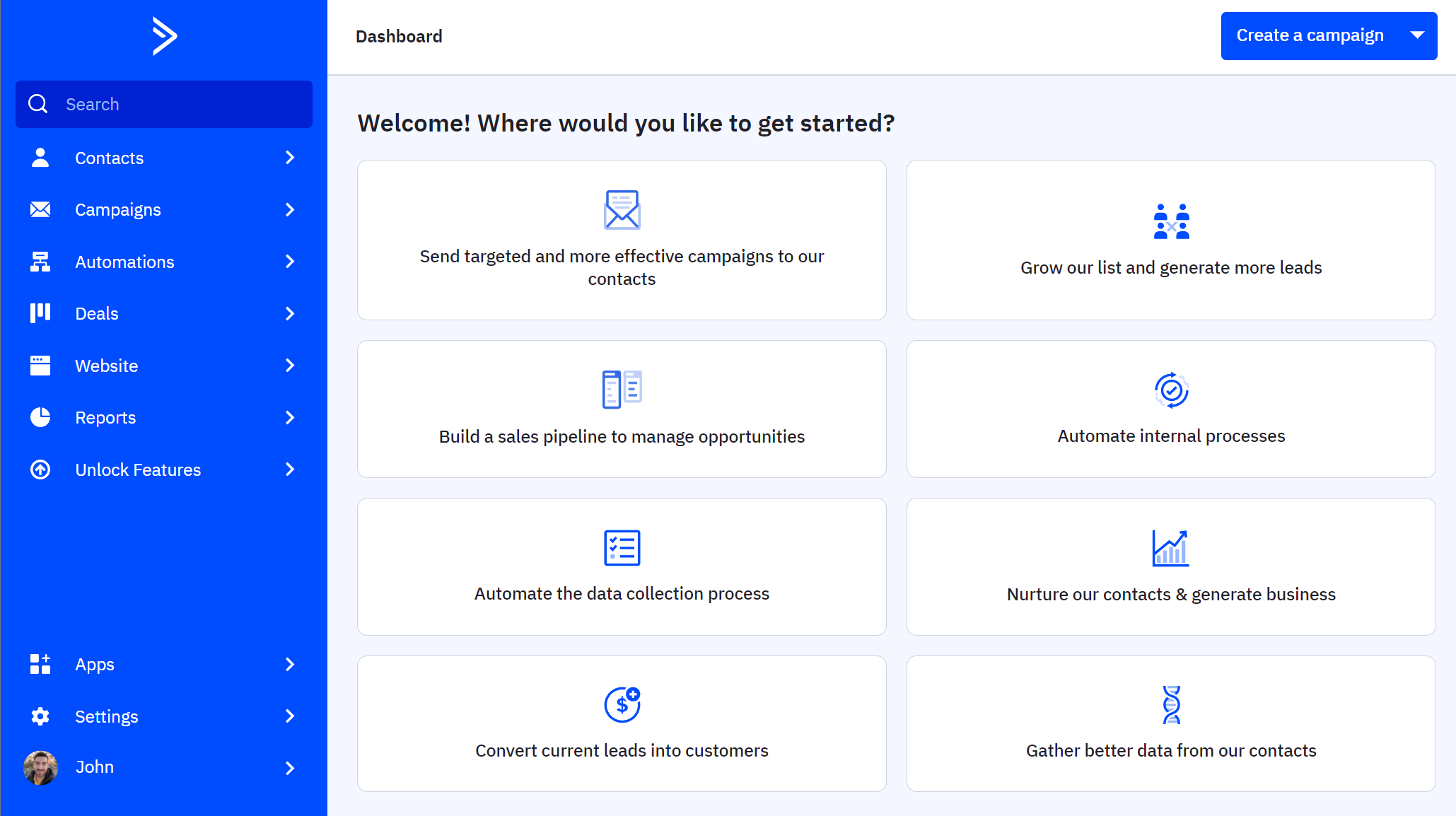
Pricing: Paid plans start at $19/month, 14-day trial
Best Feature: Automations Map
Another strong contender for eCommerce email marketing is ActiveCampaign. This platform is more complicated than the previous ones, but it has powerful functionality. The email builder is fast and includes various customization options to create truly unique campaigns. Among the strong suits of ActiveCampaign is automation. You get a wide range of triggers to choose from, while you can also automate your SMS messages and website notifications. There is also an Automations Map feature that lets you view all your automations on a single page.
Why prefer ActiveCampaign: Powerful platform with a built-in CRM and great email deliverability.
3. Klaviyo
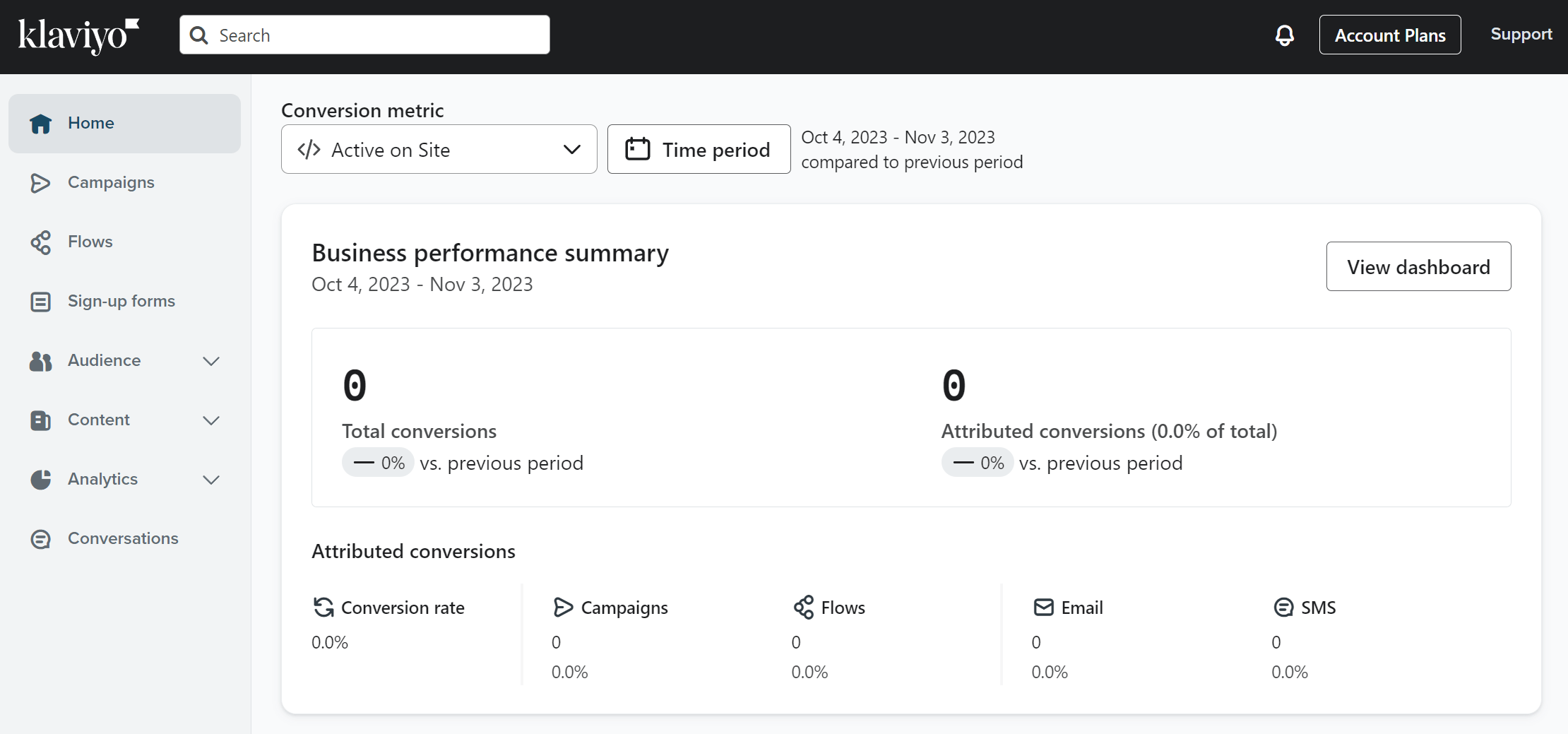
Pricing: Paid plans start at $20/month, free plan
Best Feature: Advanced segmentation options
If your online store is on Shopify, then Klaviyo should be among the services you need to consider. Klaviyo is preferred by many Shopify store owners because of their seamless integration. The platform offers email marketing, automation, SMS marketing, and mobile push notifications. You get pre-built, customizable automated workflows, in-depth analytics, and advanced personalization tools to deliver hyper-targeted campaigns. Overall, this is a powerful tool for eCommerce brands, but it has an expensive pricing model.
Why prefer Klaviyo: You own a Shopify store and want to leverage the strategic partnership between the two services.
Additional Resources to Check
Here are a few resources to expand your reading:
- Mailchimp Review
- Mailchimp alternatives + More Mailchimp Alternatives
- Omnisend alternatives
- Best email newsletter services
Omnisend vs Mailchimp: The Takeaway
We hope that after this article you have a better understanding of the two competitors and how each one could benefit your business. Omnisend is geared heavily towards eCommerce brands providing useful tools to engage your audience as well as understand their behavior. Mailchimp has a more generic approach, thus being suitable for many kinds of businesses, both small and large.
Our advice is to take advantage of the free plans offered and see which service could help you realize your marketing goals more easily.


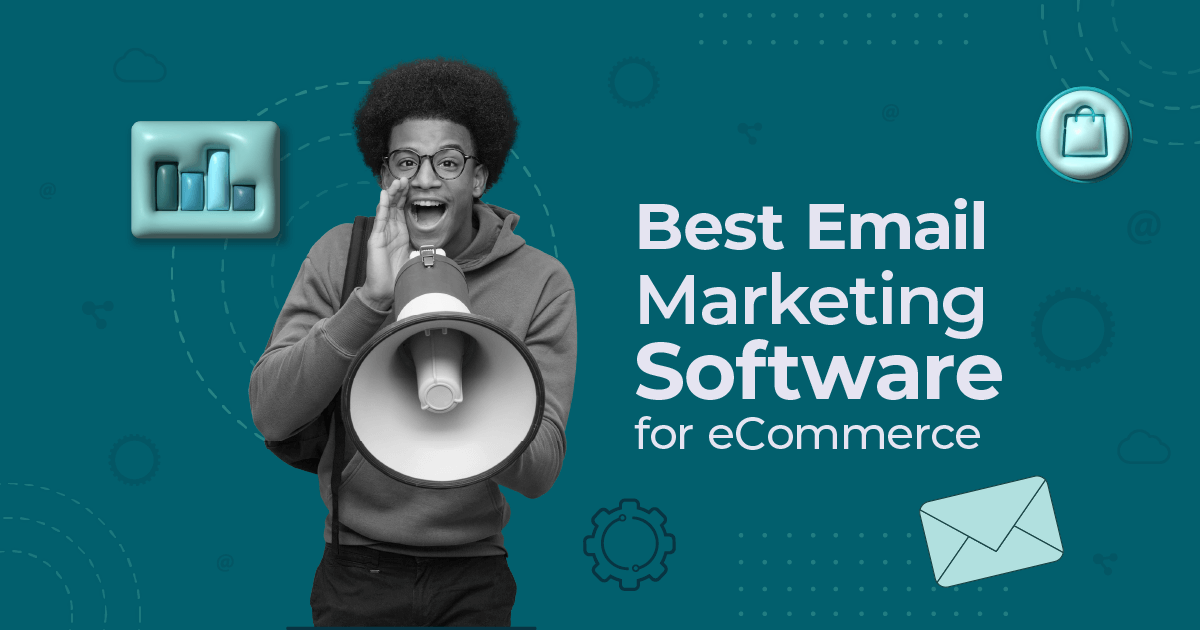
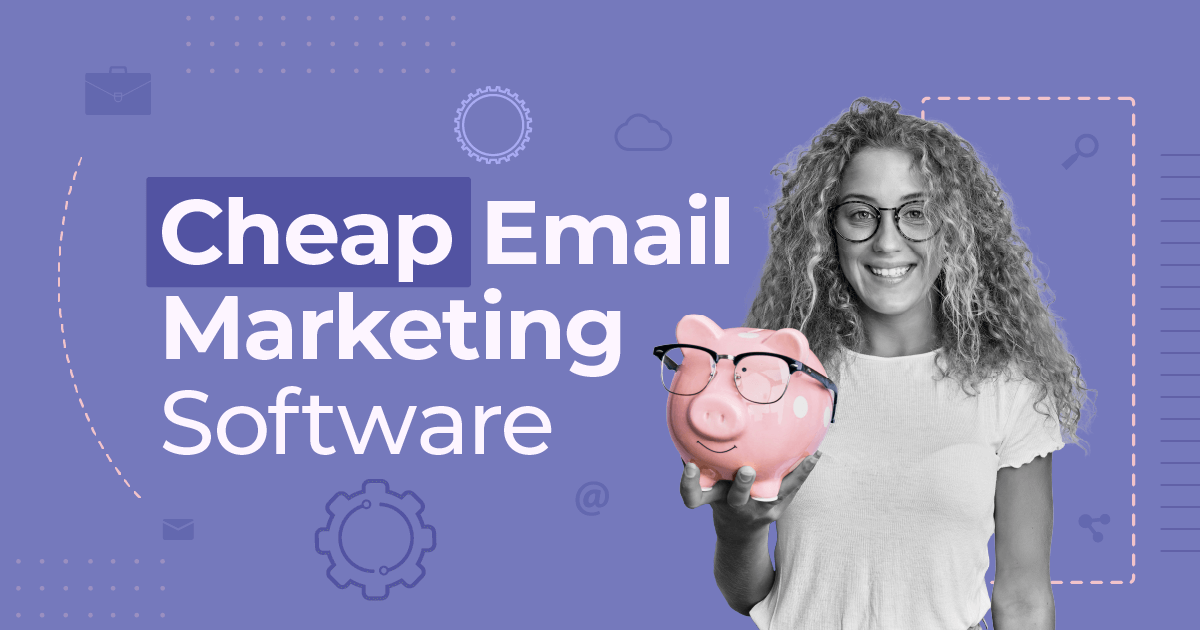
 Published by
Published by
